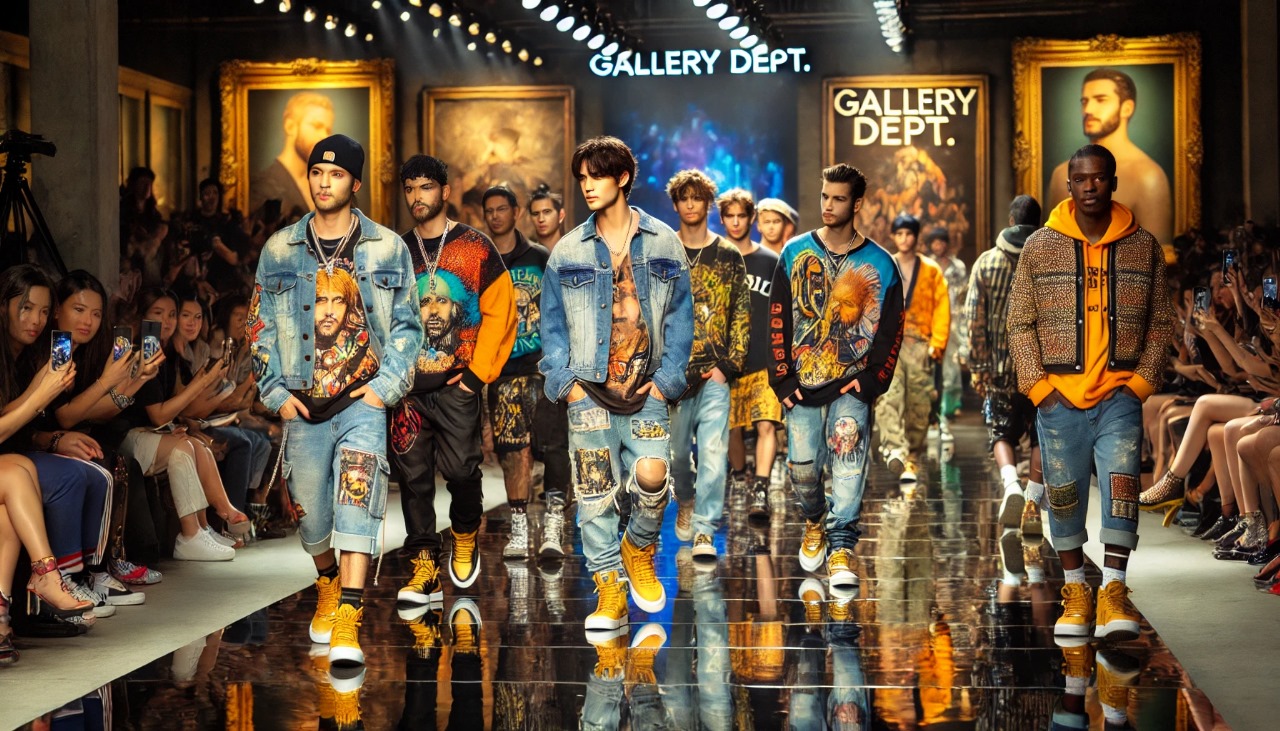Gallery Dept. vs Traditional Fashion — Doesn’t Play By The Rules
As the fashion world continues to evolve around it, Gallery Dept. has emerged as one of the bigger disruptors challenging the standards and rules that have kept such traditional fashion houses afloat for generations. An art haul, this brand has stood the revolution in defining style-transformed innovation over exclusivity created by artistic aesthetics. In this article, we will explore how Gallery Dept is changing the game in fashion and why the complex, fast rules of typical fashion seem to only apply now.
Gallery Dept Debuts a Different Kind of Fashion
Launched by Josué Thomas in 2016, Gallery Dept was originally a conceptual project that would entirely unorthodoxly align art with fashion. While older fashion houses centered on elegance, craftsmanship, and luxury, Gallery Dept’s identity has been defined by a characteristic raw creativity. Its style is influenced by DIY culture, vintage looks, and street art. The clear departure from the shadowy, high-fashion aesthetic generated an instant consumer reaction for authenticity, grit, and inclusion.
The essence of Gallery Dept’s technical design philosophy is individuality & self-expression. It specializes in turning classic denim, vintage tees, and oversized fits into wearable art. Instead of the regimented seasons and schedule that conventions in fashion tend to follow, Gallery Dept embodies a more organic thing. Every piece somehow has a story behind it, radiating imperfection and rawness — something many people miss in the ultra-curated high fashion scene. Shop the newest Gallery Dept collection.
Traditional Fashion Landscape: Structure and Inaccessibility
Traditional fashion houses like Chanel, Gucci, and Louis Vuitton have ruled the industry for decades. These labels have built their legacies on luxury, exclusivity, and timeless designs. The traditional fashion cycle is a cyclical model that divides the year into two main seasons: Spring/Summer and Autumn/Winter. The collections are calculated and manufactured in a specific climate, and the designs are made to cater to their high-end clientele. The collections are displayed at private runway shows for fashion royalty.
There is an exclusivity that the traditional fashion world thrives upon, too. Sporting the hottest new looks from the biggest names in fashion typically comes with a hefty cost of admission. That tacit focus on prestige and luxury extends down to all levels of the industry, from haute couture to ready-to-wear. Often, these brands trade purely on reputation and heritage to retain their market positions while their designs are regs status symbols.
Overview How Gallery Dept Breaks All the ‘Fashion’ Rules
The most impressive thing about Gallery Dept, however, is that artfulness and craftsmanship never suck up to fashion whim. Where original fashion houses cling to the long-established tenets thought correct, Gallery Dept. does the opposite and challenges those rules. Here’s how:
1. The Absence of Seasons
Traditional houses flourish on the idea of seasons, with designers months ahead creating collections that will be revealed at predetermined points over a calendar year. The Gallery Dept has a much more organic and fluid operation process than them. The brand does not define its collections by seasons, so customers aren’t only waiting months to see the next drop. Timeless and spontaneous products remind us of authentic pieces by letting their timeline dictate the drops rather than rigid schedules set up by their traditional counterparts.
2. Emphasis on Art Over Fashion
Both are collectors, true to the vision of Gary Pini. Gallery Dept. areas hard stylists and art more than formal fashion design. Each collection comes off as more of an art than fashion – clothes are a form of expression and not simply items to wear. It speaks to a younger generation of buyers who value creativity and products above the latest trend or pay for the status of a name. We’ve seen many more hand-painted projects, distressed fabrics, and deals with street artists as the response to what we can grow as a trend in cross-disciplined creativity. Enjoy the latest Gallery Dept Hoodie collection.
3. Questioning Luxury and Exclusivity
Gallery Dept’s designs rebel against the decades-old idea that high-end fashion should be for the wealthy elite, unlike traditional luxury fashion. The brand still provides the highest quality materials and construction. Still, it operates more egalitarian, allowing customers to wear high-quality artist-driven pieces at a fraction of the silly price ticket luxury fashion houses have associated themselves with. By appealing to a broader audience, the brand has become more approachable for younger and socially conscious generations who favor inclusivity.
4. Blending Streetwear with High Couture
The other significant component of the appeal of Gallery Dept is how it merges streetwear culture with high fashion features. Traditional fashion exists to bridge the worlds of street-ready pieces with more “high-end” ensembles, giving Gallery Dept’s garments a sense of home on both sides of the fence. The significance of this crossover stands in the light of the contemporary fashion landscape, where lines between street style and high fashion have almost all but blurred. This seamless blending makes the brand particularly appealing to youth culture, and fashion-forward individuals who want to wear something more reactive and modern than traditional luxury houses can provide.
What can traditional fashion learn from the gallery department?
The success of Gallery Dept should serve as more than just a clever quip for traditional fashion houses that may feel distanced from the modern consumer. Conventional fashion brands need to be faster movers, tending to check on their heritage rather than adapt to cultural change. But as we’ve learned from the Gallery Dept, there is power in being no longer controlled and unrestrained.
Could use a puny learning for traditional fashion:
- Artful expression and stepping outside the design box.
- Transitioning to looser release schedules instead of strict seasonal collections.
- Championing Range by bringing accessible yet elevated garments to a broader audience.
- Combining streetwear and luxury for the taste of a new generation.
In doing so, traditional fashion could remain relevant and enticing on different levels without losing the quality that has always been its trademark. Shop the latest Represent Clothing sale now!
In Conclusion – the Future of Fashion Is Still Ahead
The fashion game is changing, and the head-to-head we will continue to witness between Gallery Dept and legacy houses makes it clear there are no longer any rules that stand. Streetwear and art-driven fashion shows have proven that customers do not want to be pinned down to antiquated ideas of ‘luxury’ or ‘style.’ People are craving something more than that—authenticity, creativity, and personal expression.
What Gallery Dept has shown is that fashion, or at least the manipulation of clothing—it is no longer bound by tradition but rather a canvas for cultural and artistic expression—can break away from its confines. The future of fashion is turning towards brands breaking the rules, embracing individuality, and expanding what we can think of as fashion, regardless of whether or not traditional houses are ready to follow this new way.
Keep an eye for more news & updates on TheMail!


